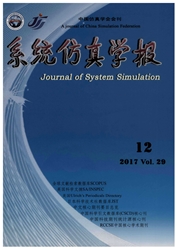

 中文摘要:
中文摘要:
提出了基于VSP变量和浮动车数据的路段和区域路网的综合排放因子计算方法;利用INTEGRATION中观交通仿真系统构建了大型演唱会周边路网仿真平台,并模拟了大型演唱会进场情况,得到了基于仿真的大量的浮动车数据;分析了大型活动影响范围内路网和主要道路的尾气排放时空分布特点。分析结果表明,大型活动发生前30—60分钟,路网的排放因子和排放量明显增大。对于道路而言,越靠近大型活动发生地点,受到的影响持续性越强,影响的持续性主要开始于大型活动发生前60-90分钟,结束于大型活动开始后的30分钟。而周边的高等级道路受到的影响程度则最大,尤其是HC排放,是均值的两倍之多,CO2也比均值增大约70%。
 英文摘要:
英文摘要:
A model to calculate the comprehensive emission factors for road segments and regional networks was proposed based on the variable of vehicle specific power (VSP) and the floating car data (FCD). A simulation platform for the traffic network surrounding a large-scale concert event was established using the INTEGRATION mesoscopic traffic simulation system. Then, this study conducted a simulation for the period before and at around the beginning of the large-scale concert, by which massive floating car data were obtained from the simulation. Subsequently, it analyzed the characteristics of spatial-temporal distributions of vehicle emissions for the network and primary roads in the influenced area. It is shown from the results that vehicle emission factors and total emissions in the network are noticeably increased during the period of 30 to 60 minutes before the beginning of the special event. In terms of the roads, the closer the road to the site of the event, the longer the impact it will receive. The continuing impact primarily begins at about 60-90 minutes before the beginning of the special event, and ends 30 minutes after the beginning of the event. The higher grades of roads surrounding the site of the event are affected the most, especially for HC, which is as high as two times over the mean value, while CO2 is also 70% higher than the average.
 同期刊论文项目
同期刊论文项目
 同项目期刊论文
同项目期刊论文
 期刊信息
期刊信息
